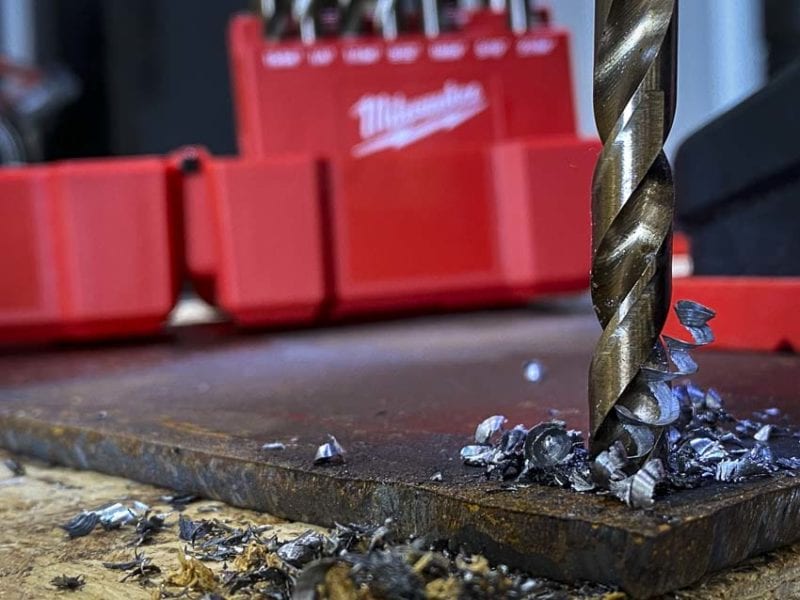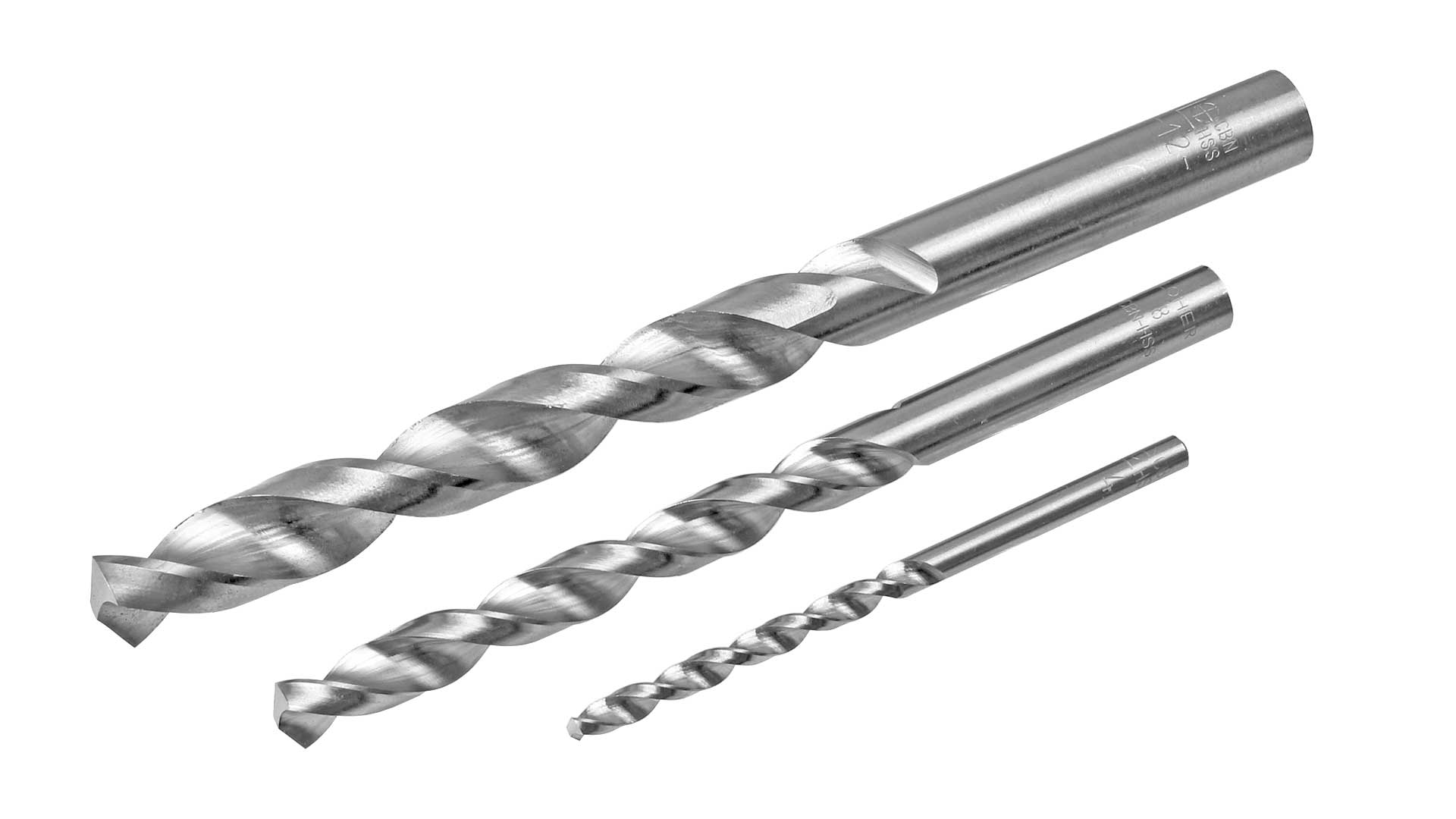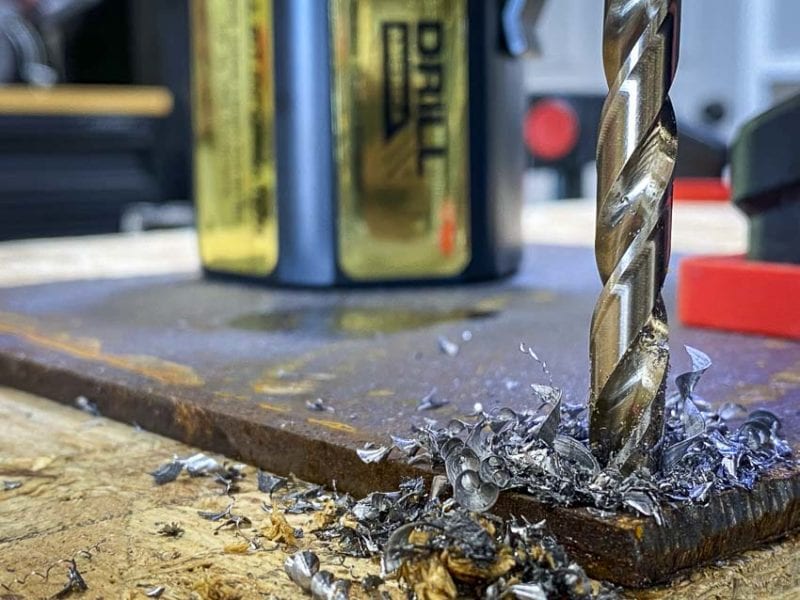Joining dissimilar metals like aluminum and stainless steel can be tricky. In this comprehensive guide, we’ll explore whether you can successfully bolt aluminum to stainless steel drill bits.
Introduction
Drill bits come in a wide variety of materials, like high-speed steel, cobalt, carbide, and more. Two popular options are aluminum and stainless steel.
Aluminum drill bits are lightweight and corrosion resistant. Stainless steel bits are extremely durable and strong. Both have their advantages in certain drilling applications.
But can you join these dissimilar metals together? For example, can you bolt an aluminum shank to a stainless steel drill bit? Or attach a stainless chuck to an aluminum bit?
As we’ll discuss, while it is possible to bolt aluminum to stainless steel drill bits, great care must be taken. Let’s explore the challenges, solutions, and best practices.

Challenges of Bolting Dissimilar Metals
Bolting aluminum and stainless steel together comes with some inherent challenges you need to consider:
Galvanic Corrosion Concerns
One major downside of joining dissimilar metals is galvanic corrosion. This refers to the corrosion that occurs when two different metals are in contact in the presence of an electrolyte.
In the case of bolting aluminum to stainless steel drill bits, galvanic corrosion can cause the aluminum to deteriorate prematurely.
The noble stainless steel essentially becomes a large cathode. The more active aluminum becomes the sacrificing anode. The stainless steel stays protected, while the aluminum corrodes at an accelerated rate.
Preventing galvanic corrosion requires careful material selection, joint design, and protective measures (more on solutions later).
Thermal Expansion Differences
Aluminum and stainless steel have very different coefficients of thermal expansion. This refers to the degree to which the metals expand or contract with temperature fluctuations.
Aluminum has a COE of 25 x 10-6 m/(m K). Stainless steel’s COE ranges from 15-18 x 10-6 m/(m K) depending on grade.
Why does this matter? With repeated heating and cooling cycles, the aluminum and stainless components expand and contract at markedly different rates. This leads to joint wear, fatigue cracks, and eventual failure over time.
Accounting for thermal expansion differences is paramount when bolting aluminum and stainless steel drill bit components.
Galvanic Corrosion Concerns
As noted above, one major downside of bolting aluminum and stainless steel is galvanic corrosion. Let’s take a deeper look at what causes this phenomenon and how it can damage drill bits.
Galvanic Series
Metals and alloys have different electrode potentials. This drives their relative nobility in an electrolyte and determines corrosion likelihood. The galvanic series ranks materials by their electrode potential.
Noble metals with more positive potentials, like stainless steel, act as cathodes. More active metals with negative potentials, like aluminum, become anodes.
In drill bits, the stainless steel components take on a positive charge. The aluminum develops a negative charge. The difference in charges creates electrochemical reactions.
Oxidation Reactions
The aluminum drill bit pieces connected to stainless steel undergo accelerated oxidation. The negatively charged aluminum ions attract positively charged hydrogen ions in the electrolyte.
This leads the aluminum metal to oxidize into aluminum hydroxide according to the reaction:
2Al + 6H+ –> 2Al3+ + 3H2
As this reaction consumes the aluminum ions, pitting and deterioration occurs.
Meanwhile, the stainless steel components remain protected by their noble potential. This galvanic couple leads to rapid damage to aluminum drill bit parts.
Solutions for Joining Aluminum and Stainless Steel
While galvanic corrosion and thermal expansion differences present challenges, several solutions exist for bolting aluminum to stainless steel drill bits.
Isolate the Metals
One strategy involves physically isolating the aluminum components from the stainless steel pieces.
For example, you can insert nylon spacers or bushings between the metals. Using insulating polymers prevents metal-to-metal contact.
However, the joints still undergo dissimilar thermal expansion. And any damage to the insulating spacer reintroduces the risk of galvanic corrosion.
Use Protective Platings/Coatings
Another option is to apply protective nickel, tin, or zinc platings over the aluminum mating surfaces. This forms a sacrificial barrier layer protecting the aluminum underneath.
Alternatively, paints and powder coatings like epoxies effectively isolate aluminum from stainless steel drill bit components. But these non-conductive layers can wear off over time.
Choose Compatible Alloys
When possible, selecting aluminum alloys that are closer in nobility to stainless steel minimizes galvanic potential. This lessens galvanic corrosion likelihood.
For example, newer 7000-series aluminum alloys have compositions that make them far less active. Pairing these alloys with stainless steel poses lower risk.
However, these specialty alloys have trade-offs in terms of cost and manufacturability.
Best Practices for Bolting
When bolting aluminum and stainless steel drill bit parts, following best practices goes a long way in creating durable joints:
Quality Fasteners
Using high-grade stainless steel bolts, nuts, and washers avoids introducing another metal into the mix. The fewer galvanic couples, the better.
Careful Torquing
Over or under-tightening galvanically mismatched joints can accelerate damage. Use a calibrated torque wrench and target the manufacturer’s specifications.
Frequent Inspections
Periodically examine the joints for signs of wear, corrosion pitting, debris buildup in threads/Crevices, and decrease in structural integrity. Address any issues promptly – don’t simply re-tighten loose bolts.
Apply Sealants
Sealants like threadlockers help minimize penetration of moisture and contaminants into bolted areas. Without an electrolyte present, galvanic corrosion likelihood drops substantially.
However, the sealant must withstand the expected operating temps of the specific drill bit and application.
Allow for Expansion Differences
Proper drill bit joint design must allow for the considerable difference in thermal expansion rates between aluminum and stainless steel.
For example, slip-fit joints avoid constrained expansion stresses. Floating bolt arrangements can also help curb fatigue failure.
By minding material compatibility, corrosion protection, assembly methods, and joint design, bolting aluminum to stainless steel drill bits can work reliably.
Drill Bit Materials Comparison
Now that we’ve covered joining considerations, let’s compare some pros and cons of aluminum versus stainless steel as drill bit materials:
Aluminum Drill Bits
Pros
- Extremely lightweight
- Highly corrosion resistant
- Cost-effective material
- Good thermal conductivity
- Anodizable surface treatments
Cons
- Relatively soft and weaker than steel
- More flexible and prone to walking
- Not suitable for high-speed machining
- Susceptible to galvanic corrosion

Stainless Steel Drill Bits
Pros
- Very high strength and hardness
- Excellent wear resistance
- Handles high machining speeds and feeds
- Some corrosion resistance depending on grade
Cons
- Costlier than carbon steel or aluminum
- Lower thermal conductivity
- Difficult to sharpen
- Can still corrode in certain conditions
In terms of drill bit bolting compatibility – higher nickel 200-series stainless alloys pose less galvanic risk when connected to many aluminum alloys.
Frequently Asked Questions (FAQ’s)
Here are answers to some common questions about bolting aluminum and stainless steel drill bit components:
Can You Bolt Aluminum to Stainless Steel Drill Bits?
Yes, you can bolt aluminum shanks, chucks, sleeves, etc. to stainless steel drill bits. But care must be taken to mitigate galvanic corrosion through isolation methods, protective coatings, sealants, proper joint design, and compatible alloys.
What Type of Stainless Steel Can Be Bolted to Aluminum?
300-series stainless alloys like 304 and 316 pose very high galvanic risk to aluminum. 400-series ferritic grades are somewhat better for aluminum pairing. But 200-series nickel alloys offer the closest nobility. Lean duplex and 316L are also options.
Is Aluminum or Stainless Steel Better for Drill Bits?
It depends on the drilling application! Aluminum pros are cost, weight, corrosion resistance. Stainless steel pros are strength, wear resistance, high-speed capability. Materials can also be combined with an aluminum shank on a steel bit for light weight and flexibility.
Can You Weld Aluminum to Stainless Steel?
While possible, friction welding dissimilar aluminum to stainless steel is not recommended. The welded joint struggles with brittle intermetallic phases as well as thermal and galvanic corrosion challenges. Mechanical fastening is preferred.
Conclusion
Bolting aluminum and stainless steel drill bit components together has distinct advantages but also unique compatibility hurdles to overcome.
By understanding galvanic principles and accounting for thermal characteristics, robust bimetallic drill bits can be assembled. Using proper alloys, protective measures, torque practices, and joint designs is key.
While joining aluminum to stainless steel drill parts requires careful consideration, the performance benefits make it a worthwhile pursuit when application needs dictate mixed materials.
